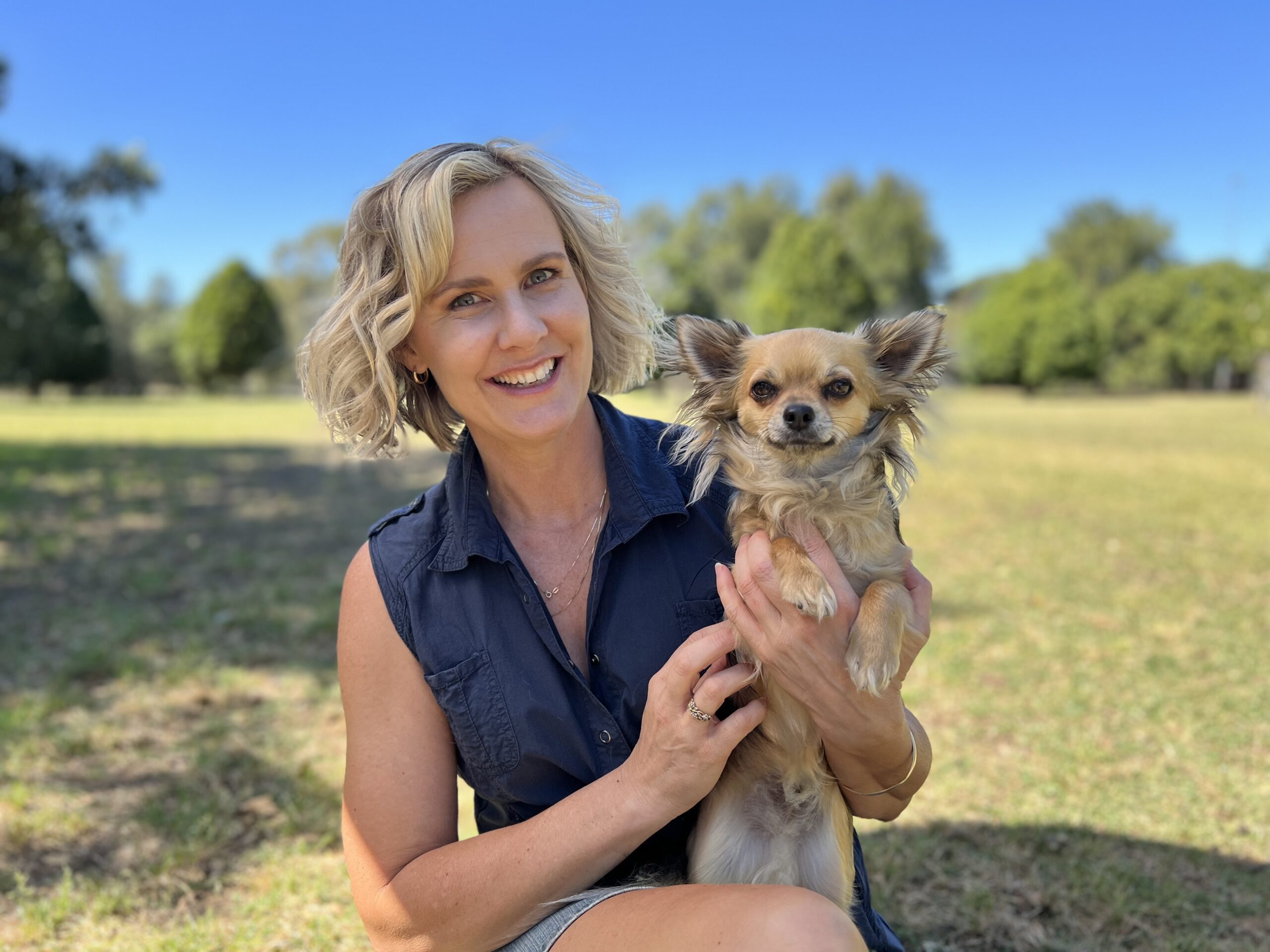Why Do Dogs Lick Their Paws? Understanding Excessive Paw Licking, Reasons and Solutions
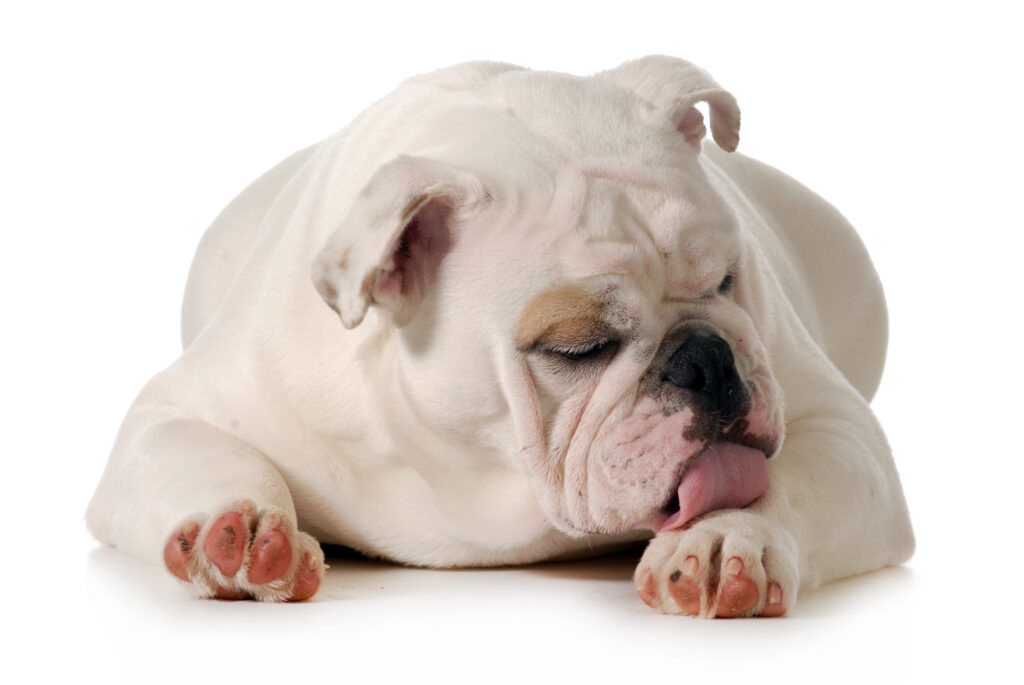
Dogs licking their paws is a common and natural behaviour. Most dogs lick a few common areas, such as their paws, between their toes, along their joints, forearms or belly. Sometimes, they bite or chew these areas too.
As dog owners, we understand your stress and worry when your pup starts licking or biting their paws excessively. While paw licking is often a harmless behaviour, excessive licking or biting can signal something deeper, like allergies, anxiety, poor gut health, or injury.
Understanding the cause behind this behaviour and tackling it proactively can help your dog feel comfortable and happy again. Read our blog to understand why dogs lick their paws, the warning signs of excessive licking, how to address these issues, and when you need dog grooming products.
Why Do Dogs Lick Their Paws? Common Reasons
Dogs lick their paws as part of their normal behaviour. Normally, it is nothing to worry about. However, if you are concerned your dog is excessively licking their paws, here are some common reasons why:
Natural Grooming
Dogs like their paws because it is simply a part of their natural grooming. It is a self-cleaning technique.
Boredom and Anxiety
Sometimes, dogs lick their paws as a way to cope with boredom, stress or anxiety. If your dog is left alone for long periods of time, they may lick their paws as a way to relieve the boredom. Paw licking is also a self-soothing behaviour when they feel unsettled or anxious. Enrichment, exercise and plenty of toys can help keep them stimulated and distracted.
Environmental Irritants
Allergens like pollen or grass can cause itching or irritation. This triggers paw licking as a form of relief. When you come back from a walk, make sure you wipe your dog’s paws and legs with a wet towel to remove any dirt or grass. We recommend washing your dog’s paws with our Stella’s Blend No.2 Shampoo to help remove all allergens. Or try Houndztooth’s bestseller dermal spray for itchy paws — the Dog Rescue & Relief Spray Coco’s Blend No.4 — suitable for dogs prone to itching and safe to lick.
Injuries or Foreign Objects
Small cuts, splinters, grass seeds, and thorns can cause pain, leading to excessive licking as a self-soothing mechanism. If you find your dog going back to excessively lick the same spot, it would be a good idea to check for injuries. Inspect their paws for:
- Stings
- Cuts
- Redness
- Ingrown or broken nails
- Dry or cracked paw pads
- Paw pad burns
- Grass seeds
When Should I Worry About My Dog Licking His Paws
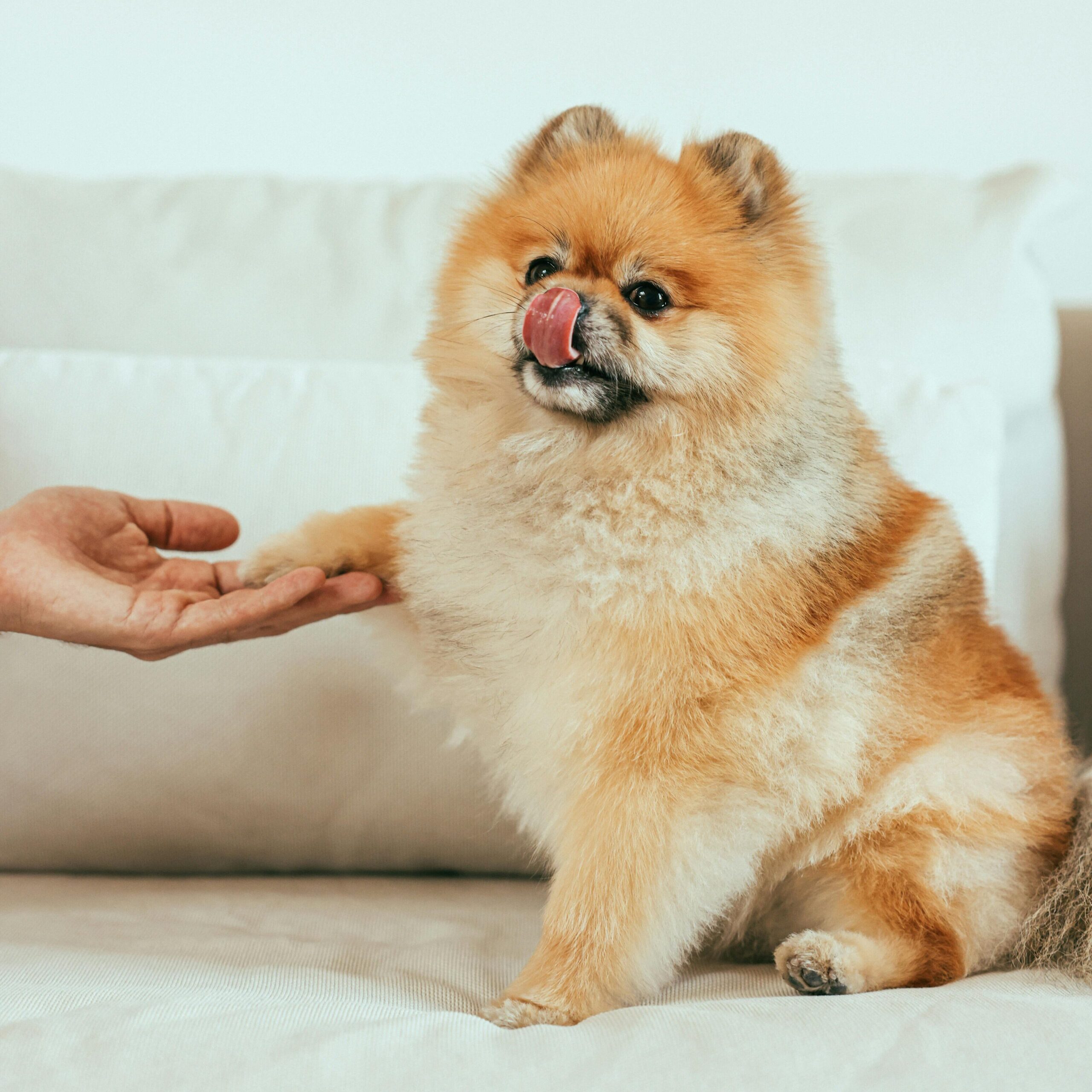
If your dog is persistently licking their paws, it may be time to determine the reason why. If paw licking disrupts their normal routine or the skin has become red, inflamed, has open wounds, or is bleeding or infected, it’s time to consult a vet. If bald patches, sores, or hot spots form, it’s another sign that there could be underlying issues like allergies, infections, or parasites.
If these symptoms appear, make sure you consult a vet. They can help provide an accurate diagnosis and let you know if your dog needs medication or treatment.
Medical Causes of Paw Licking
Allergies
Paw licking can often be a sign of allergies, which can be triggered by a number of factors, such as changes in food, seasonal changes, or contact with allergens and pollen. Food allergies can cause discomfort, which can trigger excessive licking as a self-soothing mechanism. Seasonal changes may lead to reactions from pollen or other environmental irritants. This can cause irritation and skin issues, which will lead to excessive licking or chewing. Along with this, contact allergies can cause sensitivities. A dog shampoo for itchy skin may help soothe the itching.
Parasites
Dr. Leigh Davidson from Your Vet Online had this to say about parasites like fleas and mites:
“Parasites like fleas, mites, and even ticks can cause irritation, leading to excessive licking and biting at the paws. Flea allergies, in particular, can make a dog’s skin incredibly itchy, causing them to lick and chew their feet. Prevention is easy, use a vet-recommended flea and tick product year-round.“
Pain or Arthritis
As dogs age, they may develop arthritis or other joint-related issues that cause pain and discomfort. Licking their paws can become a coping mechanism. Senior dogs, in particular, may lick their paws due to the pain caused by arthritis or inflammation in their joints. If the paw licking persists or is accompanied by signs of limping or difficulty moving, it’s essential to consult your veterinarian.
Poor Gut Health
A theory indicates that one of the first signs of an unbalanced gut is excessive paw licking and scratching in dogs. An unbalanced gut can cause inflammation, which irritates dogs from the inside out. It can make dogs’ paws itch, causing them to lick them excessively. We recommend using probiotics for dogs to rebalance your dog’s gut bacteria and help reduce paw licking and scratching.
How Do I Get My Dog to Stop Licking Paws?
If your dog constantly licks their paws, it’s important to identify the cause—whether it’s allergies, boredom, or anxiety. Here are our experts’ tips:
Inspect and Clean Regularly
Inspect your dog’s paws after each walk to check for objects like grass, thorns, or dirt. Gently wipe them down with a damp cloth or pet-safe wipes to remove debris. Look for redness, swelling, or sores, which could indicate irritation or infection.
Dietary Adjustments
Certain food ingredients can trigger allergies or inflammation in dogs. To prevent this and maintain overall gut health, keep a close eye on your dog’s diet and introduce new food gradually.
Provide Enrichment
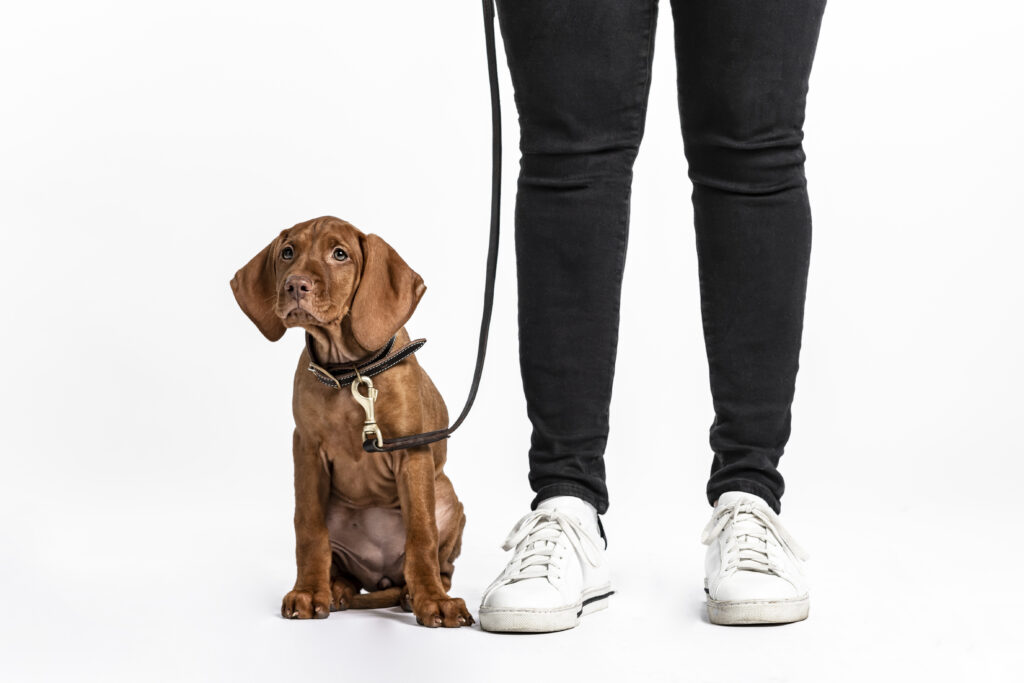
Combat boredom by providing enrichment activities through toys, games and treat dispensers. A busy dog is less likely to focus on licking paws. Here are some enrichment ideas:
- Regular exercise to burn off excess energy.
- Provide chew toys or rotating toys to keep your dog engaged.
- Ice blocks and frozen treats will keep your dog busy and be a good relief for summer days.
- Place a few toys and treats under the washing basket to let your dog get to them.
- Scatter feeding – a technique of scattering your dog’s food over a wide area and letting them find it. This provides mental stimulation and prevents your dog from eating their food too quickly.
Use a Paw Balm
Depending on the problem, and especially if it’s a milder issue, soothing remedies like a paw balm can be used regularly. Paw balms leave your dog’s paws feeling moisturised and smooth — just make sure that they are safe to lick. Some dogs can be fussy about having their paws touched. If your dog is quick to lick the paw balm off, you can distract them with a treat or a bone while you apply it.
If there are underlying health issues, paw balms can only soothe, not cure the issue. If you’re concerned about excessive licking, check with your vet.
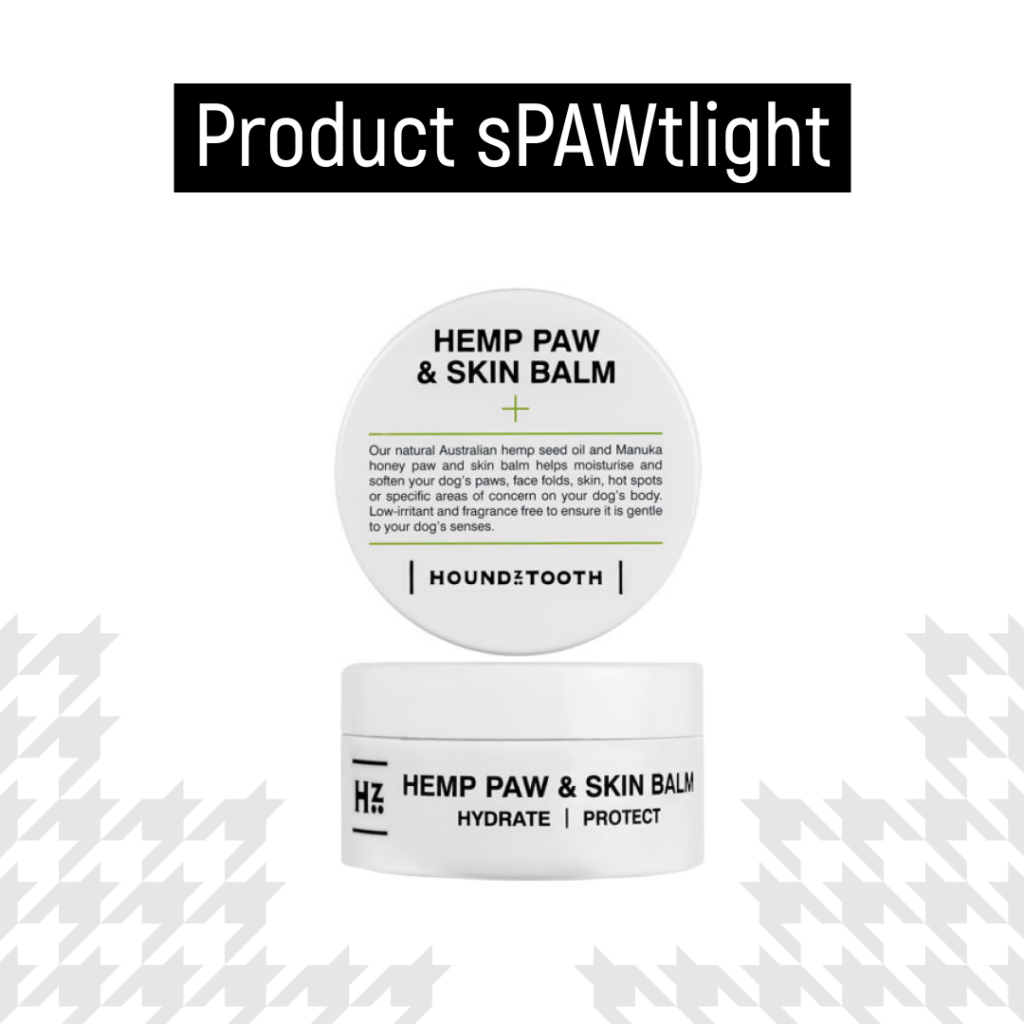
You can use the Houndztooth Hemp Skin and Paw Balm every day. While it is made to suit all dogs, if your dog has sensitive skin, start slowly. Put it on once a week and gradually increase the frequency.
The Houndztooh Hemp and Paw Skin Balm is a premium product for your pup, filled with natural goodness. Here’s what Dr. Edward Bassingthwaite, a Melbourne-based vet, had to say about the ingredients behind Houndztooth’s Hemp and Paw Skin Balm:
“Manuka honey is antibacterial, antifungal, and soothing. Hemp seed oil is soothing and has anti-inflammatory properties too. This is a simple, effective way to help your itchy, paw licking pups feel better- but always go to the vet if the balm doesn’t make a positive difference in reducing the licking!”
Preventing Future Paw Licking
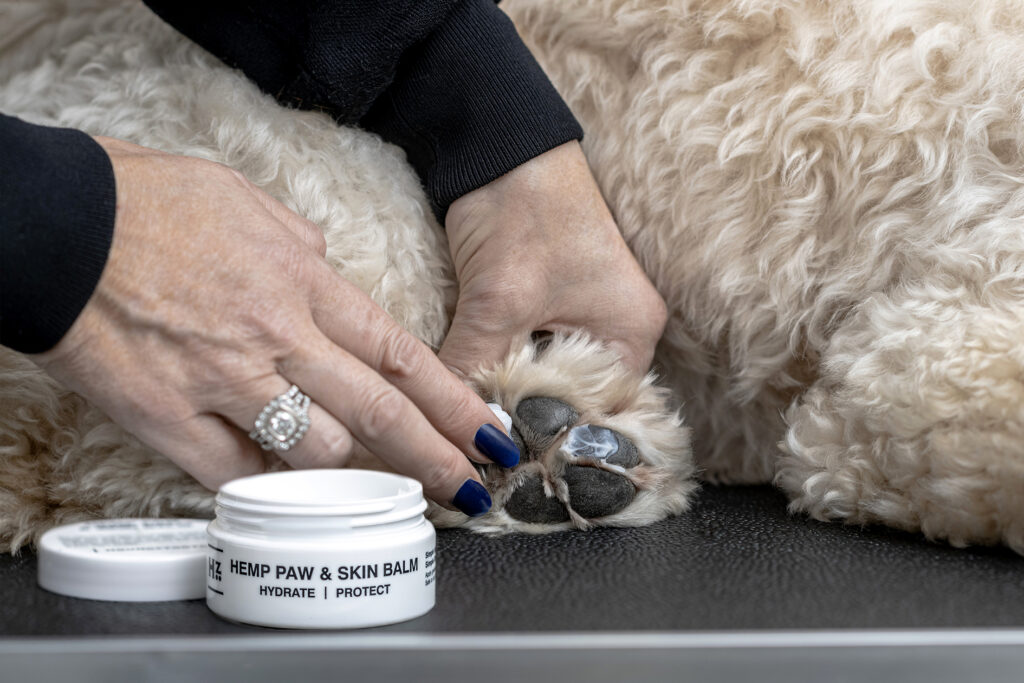
We asked our vet experts for some tips to improve paw health. This is what they had to say:
- Use High-Quality Soothing Balms:
Moisturise paws with soothing balms to prevent dryness and irritation. Look for low-irritant and fragrance-free formulas, like Houndztooth’s Hemp Paw and Skin Balm.
- Fur and Nail Care:
Trim hair on the paw and between toes and pads. Keep your dog’s nails trimmed and neat to avoid any ingrown nails. Any nail discomfort or injuries can lead to excessive licking.
- Inspection and Cleaning:
Regularly inspect your dog’s paws, especially after walks. Keep paws clean and dry. Rubbing your dog’s paws off with a wet towel after a walk can help. Regular baths with high-quality hypoallergenic dog shampoos help maintain overall cleanliness and hygiene.
- Watch Their Diet:
A balanced diet helps maintain skin health, including the paws. If you’re introducing something new to your dog’s diet, introduce it slowly and watch your dog carefully for any side effects.
- Consult a Vet if Problems Persist:
If paw licking continues despite care, visit your vet. They will be the best person to advise you in case your dog needs an ongoing management program.
Conclusion
Paw licking is normal to a degree, but excessive licking can indicate underlying issues. With proper care and a bit of oversight, you can ensure your dog stays comfortable and happy. Dr. Leigh Davidson summarises this: “By keeping your dog’s paws clean, identifying possible allergies, and seeking veterinary advice when needed, you can keep them comfortable and healthy.”
Explore Houndztooth’s premium range of dog grooming products to support your dog’s skin and paw health. If you have any questions or aren’t sure if a product is right for your dog, contact our team and we’d be happy to help.

